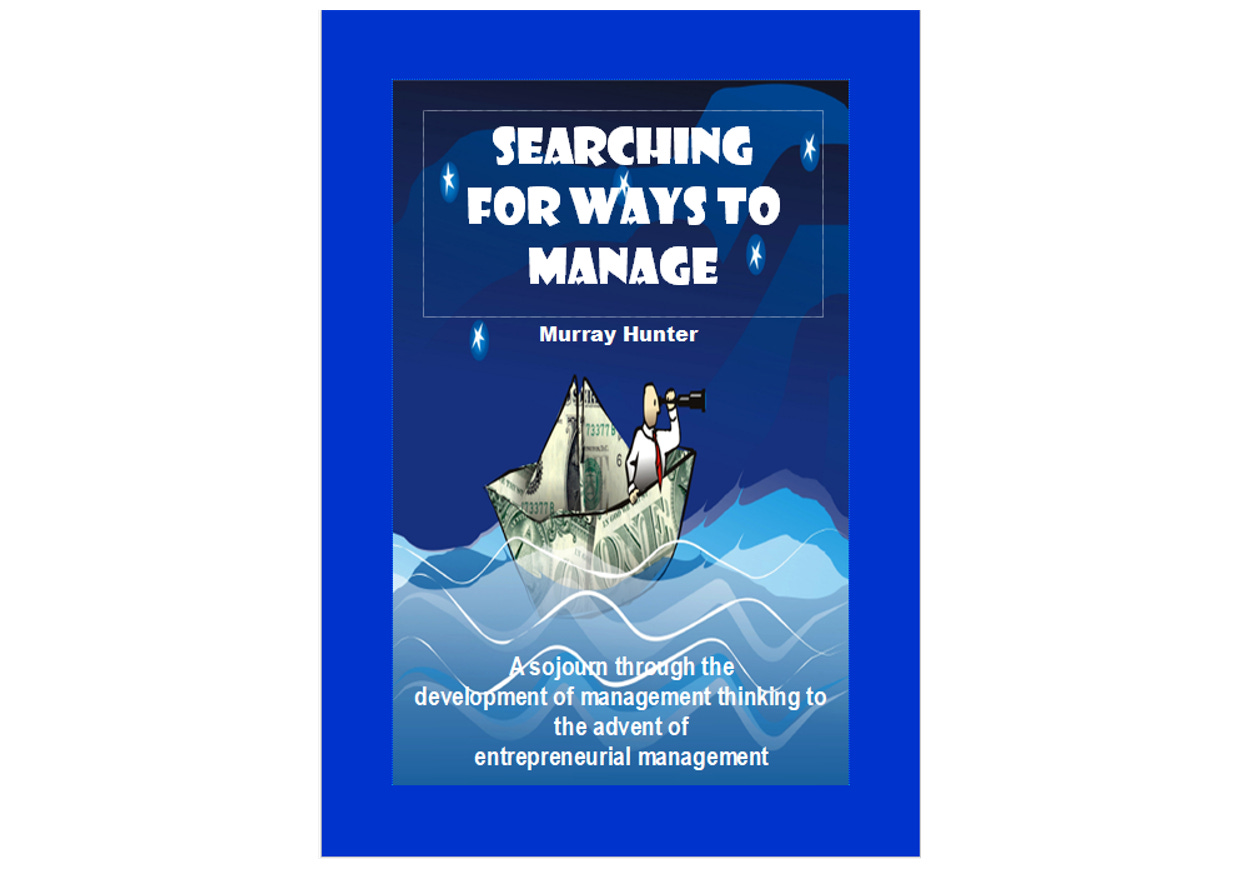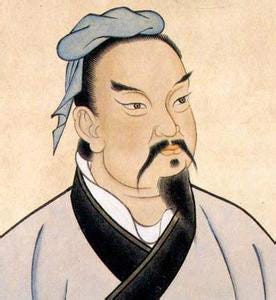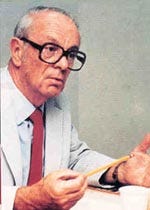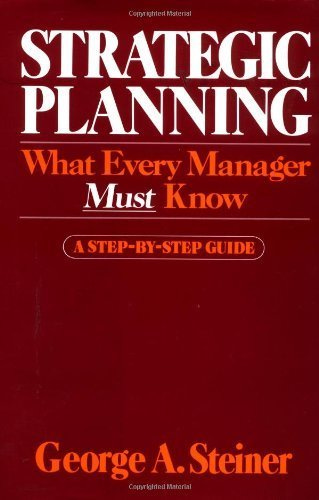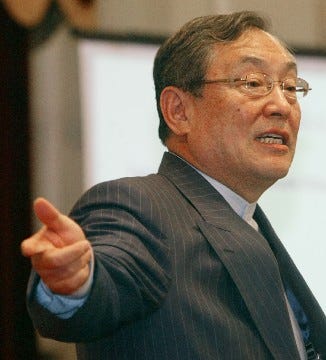The evolution and influence of thinking in management Part 3: Strategy
An unpublished series of management ideas
The third part covers ideas and practices which have shaped the way we think about strategy today.
Strategic Thought
Sun Tzu’s The Art of War was written 2,500 years ago and was most probably the first comprehensive book of military strategy ever written. Sun Tzu saw strategy as a tool in warfare, primarily out of sight of the enemy, aimed at gaining advantage and defeating an adversary by fighting as few battles as possible[i]. Military strategy has influenced business strategy as it has a similar objective of achieving a desired result and winning. Some of the important principals of Sun Tzu’s strategies that can be seen as relevant to business are summarised below:
Business is extremely important to the owner so thorough planning is necessary
Avoid if possible direct competition against competitors (i.e., find a market where there is no competition)
Emulate as much as possible the strengths of your competitors and build your strengths where your competitors are weak
Ensure you have a planned exit strategy if necessary
Know your competitors well, you will have a better chance of success
Good leadership is a powerful motivator of followers (wisdom, sincerity, benevolence, courage, strictness)
Show by example
Develop shared values in your organisation to gain commitment
Develop competitive advantage and make full use of it in the marketplace
A powerful and efficient leader is indispensable to the success of the firm
Have a good technical background
To be competitive, a company must be able to capitalise on various changes in the economy, business and social environments and develop strategies accordingly
Must realistically understand what is in and outside of your control
Position yourself close to the resources you need and markets
Strength is a relative concept, no absolute superior or inferior strength, it is how you arrange your resources that can bring success
Hide your strengths and weaknesses from your competitors so you have the element of surprise in the marketplace
Seek out as much information about your competitors, markets and customers as possible
Delegate subordinates with enough authority to get the job done
Training is an important method of achieving efficiency
A combination of benevolence and strictness is the key to guaranteeing loyalty of your staff
Be transparent in your reward systems so employees know what they will receive
Many authors writing about Asian business attribute Chinese business success to the following of the doctrines of Sun Tzu[ii]. This may have some positive bearing in the business strategies of some businesses, which are quoted as examples in books[iii], and Sun Tzu’s philosophies have certainly influenced writers[iv]. But as other authors have commented in the Asian SME context, most businesses start out finding the correct business strategies by nothing more than trial and error until they find the winning set of strategies for their businesses[v].
Sun Tzu
Modern corporate strategy began with Igor Ansoff in 1965 with a comprehensive theory of corporate strategy. Ansoff postulated that strategy is a matter of combining products with the markets selected by the firm, where the firm continually monitors these markets and makes decisions to enter and exit[vi]. Ansoff introduced gap analysis as the key to making decisions about markets to enter and developed the concept of synergy, where the return from a company’s combined resources, should be greater than the sum of its parts.
Ansoff’s book was well received by the corporate world, but it was hard to completely understand and implementation proved harder than the concepts. Ansoff in later works stated that firms were paralysed by analysis and stipulated five key elements[vii] that were critical to the firm’s success;
No single formula will work for all firms,
The most important strategic variable is turbulence in the external environment,
The aggressiveness of the strategy must match the strength of the turbulence in the environment,
Management must have the capability to implement the strategy, and
The key internal variables are cognitive, psychological, sociological and anthological.
This became known as the Strategic Readiness Diagram.
Igor Ansoff
At the same time, management consulting was beginning to grow as a business and Australian Bruce Henderson set up the Boston Consulting Group (BCG) as a strategic consultancy firm. Henderson espoused that strategy is needed by firms to successfully exploit opportunities and create value through competitive advantage. He developed a matrix model to evaluate strategy along two axis of relative market share and market growth. This became known as the Boston Matrix based on a single hypothesis that high market share in a growing market is the most profitable position a firm could be in. The Boston Matrix proved very popular as it could indicate visually potential strategy and was easy to understand and simple. This innovation created the ‘off the shelf’ consulting culture in corporate America and embedded consultants into the board rooms of many firms. Other consulting firms developed their own modified versions of the matrix, of which the General Electric and McKinsey Matrix are best known. The Boston Matrix also created a preoccupation about market share, which influenced marketing strategy for many years.
Bruce Henderson
George Steiner in 1979 wrote a book on strategic planning which was more like a step by step manual. Steiner organised the tools analytic of strategic planning in a way that they could be used by line managers in the firm, rather than in a separate detached planning department. Steiner argued that strategic planning is an attitude and all employees should be involved in the process. Planning should be “inextricably interwoven into the entire fabric of management and not something separate and distinct from the process of management”[viii]. Steiner also went on to stipulate that small business should also develop strategic planning in their businesses and that not-for-profit organisations require strategic planning. Steiner also recognised that executives have personal aims which will influence the planning process. Finally, Steiner was one of the first writers in the area of strategy to recognise that corporations have a social responsibility to society. Steiner offered the corporate world something with much more depth than the matrix and is probably under recognised for his contribution to management theory.
Michael Porter’s books are probably the largest selling management books of all time and did not come to popularity through catch phases and ‘quick fix’ scenarios. His work is completely meticulous and detailed in it’s descriptions of the environment and firm operating within it. Porter in his first book Competitive Strategy developed a theory of how a firm can examine the environment and develop strategies to achieve long term competitive advantage. Porter identified five competitive forces in the environment;
Customers which will vary in their bargaining power over suppliers and will try to exercise any power they have to lower prices,
Suppliers which will vary in their bargaining power over customers and will try to use any power to maximise the prices they receive from customers,
Substitutes to the goods and services a firm produces that will limit the prices a firm can obtain from the market place,
Rivalry in an industry that will force firms to engage in cutting prices, advertising, promotion, R&D which is likely to reduce profits, and
New entrants into an industry that will bring with them resources and the intention of taking market share away from incumbents, which acierates the decline of profits in an industry[ix].
These forces can be applied to five types of industry scenarios: fragmented, emerging, mature, declining and global. Porter’s framework gave strategists the opportunity to examine the forces of the environment in a new way and see that aspects of the external environment can actually be changed with particular strategies.
Porter’s second book Competitive Advantage postulated that there are three ways a firm can gain competitive advantage;
By becoming the lowest cost producer in the market,
By being a differential producer in the market, or
By being a focused producer in the market[x].
Porter introduced the concept of the value chain where the internal processes of a firm could be examined in an integrated way to determine the parts of the chain that could create value.
Porter took the strategic focus away from market share competition through cost competition to the plain of differentiation, both firm and product. His works opened up a new way of looking at strategy with new options available to the strategist, where firm based strategies could be developed rather than product/market strategies. Although Porter’s work is highly quoted and has become in some respects a benchmark in the strategy world, it is sometimes criticised about the lack of focus on the human aspects of strategy. Other perceived limitations of Porter’s work is that it doesn’t explain the role of new technology in creating new markets and industries. However Porter himself said that his models are only a guide for consideration and that firms will have to develop their own specialised strategies according to the circumstances. Porter’s work is more a work of economics than management and is heavily used in government and research institution studies of industries around the world, including here in Malaysia.
Michael Porter
Where Porter was clinical and analytical, Kenichi Ohmae, formally the head of Mckinsey’s Japanese office and now a global consultant was more intuitive in his approach to strategy. Ohmae developed the 3C’s Framework or Strategic Triangle[xi] where the corporation itself, the customers and the competition is the basis of all strategy where sustained competitive advantage can exist. Corporate centred strategies aim to develop company strengths relative to it’s competitors in the functional aspects of the business that are critical to success.
Selectivity and sequencing: the corporation does not need to have a lead in every function to win, it gain a decisive edge in one function that will enable it to move ahead of it’s competitors.
The case of make or buy: Outsourcing of production increases flexibility. Inflexibility of competitors to change and adjust production may have strategic implications.
Improving cost-effectiveness: can be achieved through reducing costs more effectively than the competition, be more selective in inventory carried and products offered, i.e., cherry picking the most high impact aspects of operations or profitable areas, or share key functions with the other businesses of the corporation or even with other companies to reduce costs.
Competitor based strategies can be constructed by seeking possible sources of differentiation in all company functions.
· The power of corporate and company image.
· Capitalising on profit- and cost-structure differences: advantage in lower fixed cost to variable cost ratio will be beneficial in sluggish periods where prices can be lowered to gain market share.
· Tactics for Flyweights: When competing against giants, use pricing incentives.
· Have the right balance of resources, i.e., not too many managers, plant and equipment and funds. Too much of any resource is wasteful, inefficient and will cause problems to the company.
Customer based strategies should be the basis of all strategies and the others follow to support them.
· Segmenting by objectives: look at different ways customers use products and segment this.
· Segmenting by customer coverage: trade off marketing costs verses coverage and create the optimum market coverage, as over coverage will only create diminishing returns.
· Resegment the market: In a fiercely competitive market select a key group of customers and re-examine what they are looking for.
· Changes in the customer mix: Look for changing demography, distribution channels and customer types/size, etc.
Ohmae brought a sort of empowerment to marketing management where they could look at markets in new ways with flexibility. However not many could fully implement the whole strategy triangle as a holistic strategy. Ohmae’s works and ideas are greatly respected and he still consults to a large number of corporations and governments today.
Kenichi Ohmae
Other thinkers at the time also developed concepts of strategy which were to heavily influence corporate relationships. Harrigan in response to declining companies suggested that if strategic alliances could be developed between two companies that served their mutual interests in a win-win situation, then competitive advantage could be achieved[xii]. Many alliances between corporations developed in the 1990’s in all areas of business from banks and supermarkets, oil companies and supermarkets, and between airlines.
Henry Mintzberg, one of management’s most prolific writers over the last 50 years challenged the built up theory and practice of strategic planning developed by Ansoff, Boston Consulting Group, Steiner and Porter by arguing that strategy is not the result of planning but through organizational osmosis. Mintzberg saw planning as more a myth than a reality due to the following reasons;
· Processes are more ritualistic and bureaucratic which strangles innovation,
· Data as a source of information can be broken up into ‘hard’ ( facts & figures) and ‘soft’ (intuition from antidote) data. Most often the hard data is worse than the soft data as a source of decision making.
· Managers are detached from the daily exposure to the business, where they should be immersed inside the business to create full understanding of the issues involved[xiii].
Henry Mintzberg
Gary Hamel sees that this age is presenting revolutionary challenges to the way people manage and the closer we get to the information age, the more questionable existing management practices will be[xiv]. Existing management practices take place within the boundaries of convention, company tradition, settled authorities and within an existing functional specialisation. Companies are bound up in their own set rules, which acts as a boundary they cannot escape from. Hamel contends that strategic innovation is central to the creation of new wealth and companies must deeply consider the development of new strategy. Existing strategic planning aims for incremental improvement of the firm and that strategy tends to be lucky foresight more than anything else. Hamel maps out four preconditions for the emergence of strategic innovation in the firm[xv];
The whole organisation needs a voice in creating strategy,
Discussion about strategy must cut across industries and organisations so that knowledge can be combined in new ways,
People will embrace change if they identify opportunities and rewards for themselves, and
Companies must carry out market experimentation to determine what new strategies work.
Costas Markides sees strategic innovation about developing a fundamental re-conceptualisation of what business is really about, which will lead to a drastically different way of doing things in an existing business[xvi]. Strategic innovation occurs when a company identifies a gap in market positioning, moves to fill that gap and finds a new mass market. This occurs in three ways, a) new emerging customer segments or existing customer segments which are neglected by competitors, b) new customer needs emerging or existing customer needs which are neglected by competitors and c) new ways of producing, delivering or distributing existing or new products or services to existing or new customer segments. Strategic innovation, according to Markides is difficult to achieve in organisations, due to structural and cultural factors. Markides suggests that companies must be prepared to ask basic questions about the way they are doing business, in order to move to strategic innovation, however this is difficult for companies making profits to do as they are in the comfort zone and hesitant to perceive future issues related to their strategic and financial wellbeing. Companies that can move to strategic innovation are those who look strategically, rather than financially or artificially create a positive crisis to activate the organisation into positive thinking.
Costas Markides
In the area of marketing, companies from the 19th Century began developing brands to differentiate their products from their competition. Brands probably developed in the tobacco industry, where different tobaccos in regional America began to be transported to different locations were identified by a brand. Coca Cola was a soft drink that carried the name to distinguish it from the number of other colas on the market. Proctor & Gamble in Cincinnati found in the 1930’s that it had a number of successful brand in the same category like Camay and Ivory soaps that needed a new way to manage so that due focus could be given to each brand. The company gave responsibility for total brand management to a single person (product manager) under a brand management system, which took over all decision making in regards to the brand in the company[xvii]. Brand management spread throughout most consumer goods companies and is still a widely practiced functional structuring of a marketing organisation today.
Thomas Watson Senior, the founder of IBM realised that for an organisation to be profitable, focus must be orientated towards the customer rather than the product. The objective of a company is to serve the customer, rather than become immersed in the product and technology it has developed. Watson developed this concept and embedded it within the core values of IBM which was based on the belief competing vigour sly and providing first class customer service was the key to success. This philosophy is successfully used as a strategy in a number of companies around the world today as a source of their competitive advantage, including FedEx, Thomas Cook.
In 1960, E Jerome McCarthy identified the four P’s of the marketing mix; product, price, place and promotion[xviii], as the most important ingredients in setting marketing strategy. It was not a great breakthrough in marketing thought, than rather a convenient way to view strategy. It was developed at a time when mass industrial marketing was growing rapidly and in recent times the marketing orientation of strategy has dramatically changed as the 4 P’s have become much more integrated and other factors from a customer point of view like customer needs and wants, cost, convenience, communication, distribution and relationships are seen as being more important. However, the concept until today is taught in marketing courses around the world and used by management in their marketing strategy development.
Right into the 1960’s most companies in America were production orientated, seeing the market as the means to dispose of their production. This went well until slow downs in consumer purchases create stock build ups in warehouses and interfered with production. Theodore Levitt argued that companies should become much more customer orientated in their approach to the market[xix]. Levitt’s ideas were inspired by Ford providing customers with what he thought they wanted and the rise of General Motors in gaining market share by providing customers with variations of the basic product by providing new colours, more choice and new models. Although Levitt’s ideas were accepted by corporate America in the 1960’s, it was not until the 1980’s that the marketing revolution came to fruition. Marketing departments began growing and the marketing manager became a powerful driver of the company. Philip Kotler is probably the world’s most prolific writer on marketing and structured the discipline in a way that marketing management could rise to the fore of corporate management. His works are used in business schools around the world and is seen by most as the world’s authority on the subject.
Philip Kotler
Click on subscribe so articles can be directly emailed to your inbox:
References:
[i] Sawyer, R. D., (1994), Sun Tzu: The Art of War, a translation with historical introduction, Boulder, Westview Press
[ii] Min Chen, (2004) Asian Management Systems, 2nd Edition, London, Thomson.
[iii] Chen, M., J., (2001), Inside Chinese Business: A Guide for Managers Worldwide, Boston, Harvard Business School Press.
[iv] Ohmae, K., (1990), The Borderless World: Power and Strategy in the Interlinked Economy, London, Collins.
[vi] Ansoff, I. H.., (1965) Corporate Strategy, New York, McGraw-Hill
[vii] Ansof, I. H., (1994) ‘A Contingent Paradigm for Success of Complex Organisations’, Milestones of Management, Switzerland, Schaffer Poeschel.
[viii] Steiner, G., A. (1979) Strategic Planning: What Every Manager Must Know, New York, Free Press, P. 3.
[ix] Porter, M., (1980) Competitive Strategy, New York, Free Press
[x] Porter, M., (1985) Competitive Advantage, New York, Free Press.
[xi] Ohmae, K., (1982) The Mind of the Strategist: The Art of Japanese Business, New York, McGraw-Hill.
[xii] Harrigan, K., (1980) Strategies for Declining Businesses, Lexington, Mass., Lexington Books.
[xiii] Mintzberg, H., (1994), The Rise and fall of Strategic Planning, Hemel, Hempstead, Prentice Hall.
[xiv] Hamel, G., (1995), ‘Forward’, in Financial Times Handbook of Management, London, Financial Times/Pitman.
[xv] Hamel, G., (1998), ‘Strategic Innovation and the Quest for Value’, Sloan Management Review, Winter.
[xvi] Markides, C., (1998), ‘Strategic Innovation: the Leaders Dilemma’, Sloan Management Review, Spring.
[xvii] Russell, J. T., Verrill, G. and Lane, W. R. (1988), Kleppner’s Advertising Procedure (10th Edition), New Jersey, Prentice Hall.
[xviii] McCarthy, E. J., (1981) Basic Marketing: A Managerial Approach, (9th Edition), Homewood, Illinois, Irwin.
[xix] Levitt, T., (1962), Innovation in Marketing, New York, McGraw-Hill.




